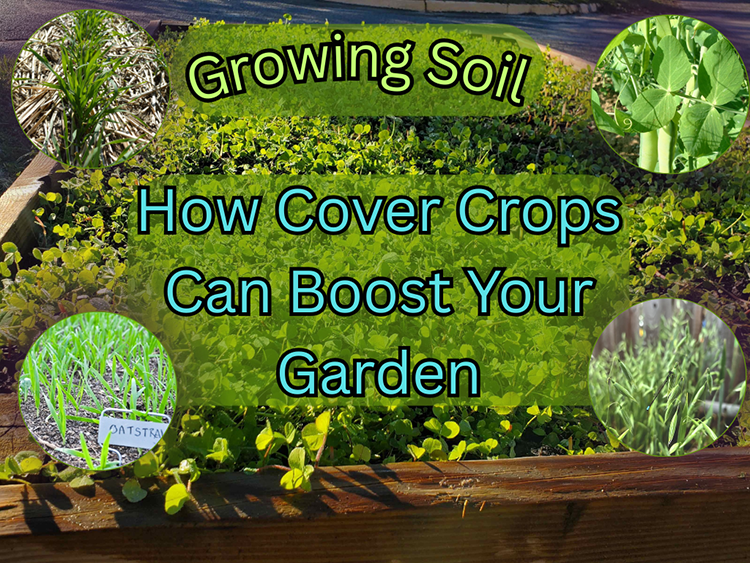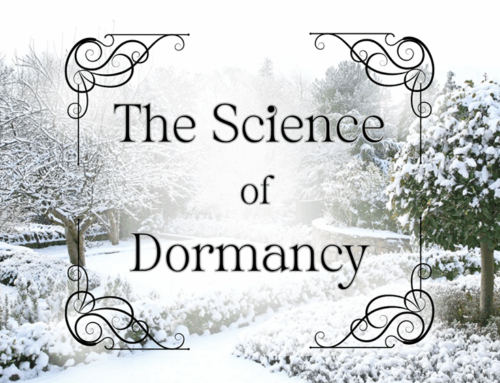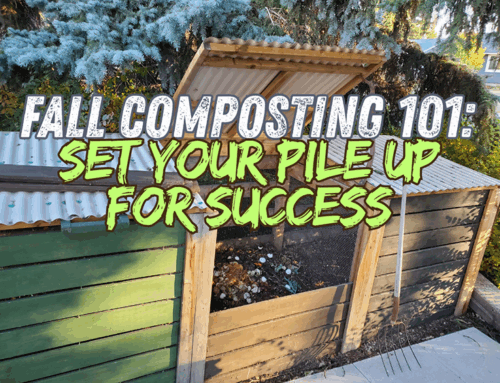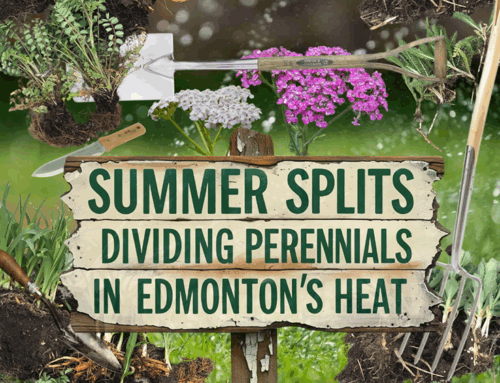Growing Soil: How Cover Crops Can Boost Your Garden
by Brett Kerley
As gardeners, we usually plant for food, beauty, or pollinators. But what if we planted for the soil itself? That’s the idea behind cover crops. They protect, replenish, and rejuvenate the garden when it’s not actively growing vegetables or flowers.
In Edmonton’s short-season, Zone 3-4 climate, cover crops offer a low-cost, high-impact way to improve garden soil, especially in newer neighbourhoods or compacted plots. They’re ideal for raised beds, backyard gardens, community garden plots, and even large containers.
What Are Cover Crops?
Cover crops—also called green manure—are plants grown specifically to cover bare soil and build soil fertility. Unlike vegetables or ornamentals, these plants are not harvested. Instead, they’re turned back into the earth to feed the soil, prevent erosion, suppress weeds, and increase organic matter.
They may be used:
- In the fall after harvesting crops
- In spring before planting
- Between plantings in summer
- As long-term living mulch in pathways or around perennials
Why Cover Crops in Edmonton?

Tomatoes with Crimson Clover Cover Crop
Zone 3/4 gardening comes with challenges:
- Short growing season (110–140 frost-free days)
- Freeze-thaw cycles that compact and damage soil
- Erosion risk during snowmelt and spring rains
- Compacted, lifeless, or disturbed soils in new developments
- Weed pressure from exposed soil in spring and fall
Cover crops help resolve these challenges with multiple benefits:
Improve Soil Structure
The roots of cover crops loosen compacted clay and sandy soil. This improves aeration, drainage, and water retention—especially important in raised beds and dense subsoils.
Build Organic Matter
When chopped and returned to the soil, cover crops feed soil organisms, increase humus, and improve long-term fertility and texture.
Suppress Weeds
A fast-growing cover crop shades out weed seedlings, acting as a natural, living mulch.
Provide Natural Fertilizer
Leguminous crops (like clover and peas) fix nitrogen from the air into the soil through root nodules, reducing the need for added fertilizers.
Prevent Erosion & Leaching
By covering the ground during heavy rain or spring melt, cover crops protect your topsoil and hold nutrients in place.
Top Cover Crops for Edmonton (Zone 3a–3b)
Fall Rye (Secale cereale)
- Zone: Hardy to Zone 2
- Height: 24–48 in (60–120 cm)
- When to Plant: Late August to mid-September
- Cold Hardy? Overwinters reliably in Edmonton
- Benefits: Dense roots break up clay, suppress weeds, survives winter and regrows early
- Turn-In Tip: Mow or dig in by mid-May, before flowering for easier incorporation
- Ideal For: Overwintering cover for spring beds, fallow community plots
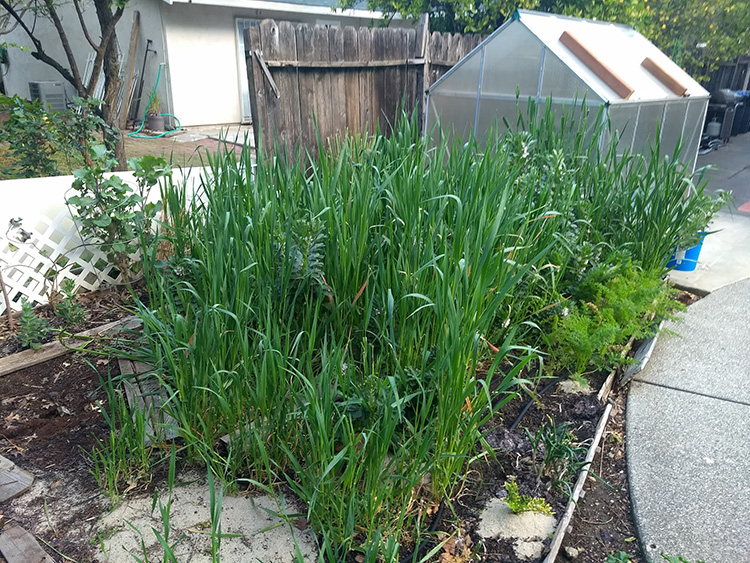
Oats (Avena sativa)
- Zone: Grows to Zone 3 but winterkills in Zone 3
- Height: 24–36 in (60–90 cm)
- When to Plant: Late July to early September
- Cold Hardy? No – dies over winter
- Benefits: Fast biomass, breaks up soil, easy to manage after winterkill
- Turn-In Tip: Leave residue on soil in spring or dig in before planting
- Ideal For: Fall beds you’ll plant later in spring
Field Peas (Pisum sativum subsp. arvense)
- Zone: Hardy to Zone 3
- Height: 18–36 in (45–90 cm) (climbing; needs support if grown alone)
- When to Plant: Early spring or late summer
- Cold Hardy? Yes – grows well in cool soil
- Benefits: Nitrogen fixer, adds organic matter, breaks up soil
- Tip: Combine with oats for a balanced root and shoot mix
- Ideal For: Soil fertility boosts before heavy feeders (tomatoes, squash)
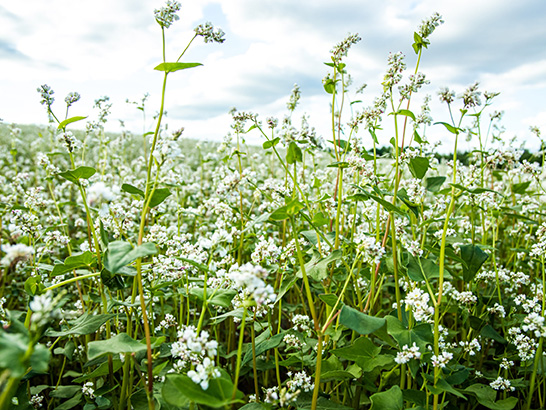
Buckwheat (Fagopyrum esculentum)
- Zone: Annual – killed by frost, grows in Zones 3+
- Height: 12–36 in (30–90 cm)
- When to Plant: Late May to August (any time after frost)
- Cold Hardy? No – very frost sensitive
- Benefits: Fastest weed smotherer, great for phosphorus cycling, flowers feed pollinators
- Tip: Cut down before seeds mature to avoid re-seeding
- Ideal For: Summer fallow gaps or quick green manure before fall crops
White Clover (Trifolium repens)
- Zone: Hardy to Zone 3
- Height: 4–8 in (10–20 cm)
- When to Plant: Spring or late summer
- Cold Hardy? Yes – perennial
- Benefits: Nitrogen fixer, living mulch, perennial cover for pathways or under perennials
- Tip: Mow to keep low, but do not till under unless rotating beds
- Ideal For: Long-term beds, fruit shrubs, orchard understory, garden paths
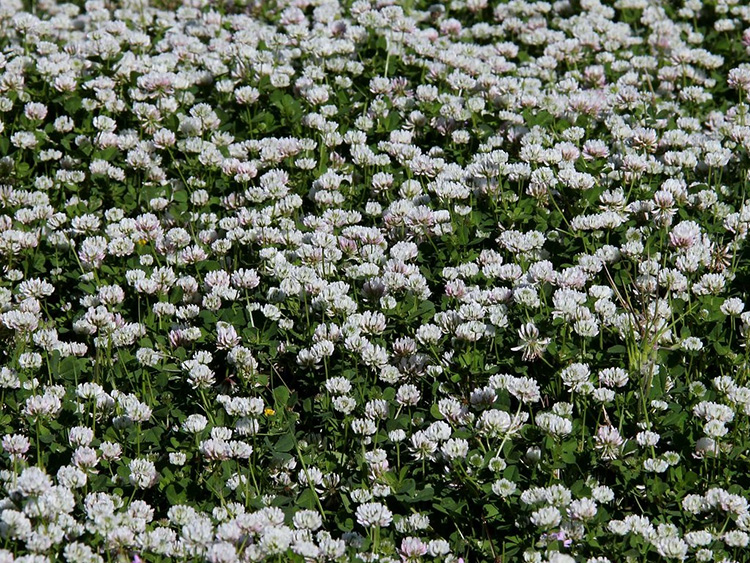
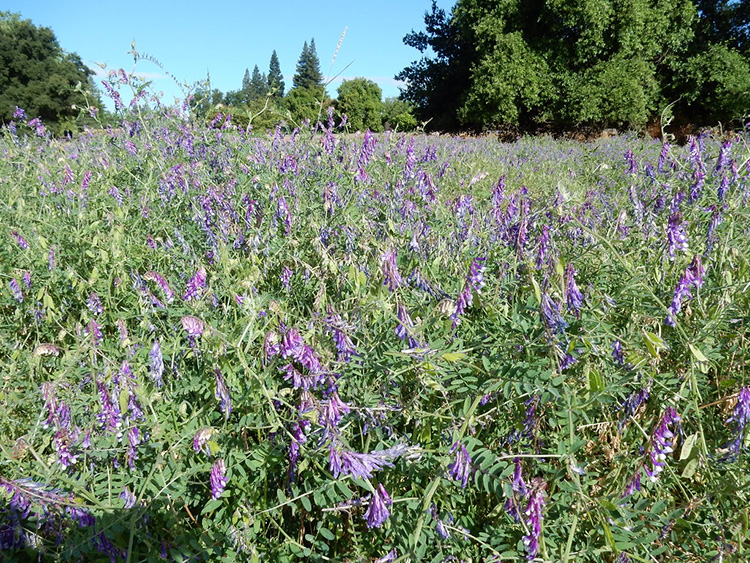
Hairy Vetch (Vicia villosa)
- Zone: Hardy to Zone 3
- Height: 24–36 in (60–90 cm) (vining habit)
- When to Plant: Late summer
- Cold Hardy? Yes – overwinters well
- Benefits: Very high nitrogen fixer, great for long-term soil fertility
- Tip: Use with fall rye or oats to balance its sprawling growth
- Ideal For: Building up new beds, long-term community plots
How to Use Cover Crops: Step-by-Step
- Clear the Bed: Remove finished crops, debris, and large weeds. Rake smooth.
- Broadcast Seeds: Sow seeds by hand or use a small spreader. Rake lightly to cover with soil (~¼ to ½ inch deep).
- Water In: Gently water until the soil is moist but not soggy. Keep soil damp during germination (4–10 days).
- Grow for 4–8 Weeks: Let your cover crop mature to about 6–12 inches (15–30 cm) tall, or flower stage for buckwheat and vetch.
- Cut or Mow Before Seed Sets: Cut the crop down using garden shears, pruners, or a string trimmer. For winter-killed crops, skip this step.
- Incorporate or Mulch: Turn green matter into soil or leave it as mulch. Wait 2–3 weeks before planting seeds.
Tips for Raised Beds and Small Gardens
- Mix & Match: Try pea/oat combos or buckwheat/clover mixes for texture, nutrients, and balance.
- Use containers: Old pots or raised beds can grow quick oats or peas in fall.
- Living mulch: Clover is ideal between stepping stones or under squash vines.
- Pathways: Sow white clover in walking areas to reduce compaction and fix nitrogen.
Cover Crops in Community Gardens
Plots often sit empty for 6+ months. Sow rye or clover after harvest to:
- Stop spring weeds
- Improve next year’s yield
- Keep your plot looking lush and maintained
Check with your garden coordinator about digging crops into shared soil.
Don’t Forget
- Don’t let rye or buckwheat go to seed unless you want volunteers!
- Don’t plant new seeds immediately after turning in green material—wait 2–3 weeks for decomposition.
- Don’t skip watering during germination, especially in dry autumns.
Edmonton Gardeners Are Already Doing This!
Many EHS members are turning to cover cropping—especially in backyard raised beds and community plots. At the 2025 EHS Garden Tour, several members shared how annual rotations of peas, oats, and clover have improved their harvests, loosened soil, and reduced their need for compost over time.
Grow Soil, Not Just Crops
Cover crops aren’t flashy. They don’t bloom in technicolour or fill your basket with food. But they quietly and powerfully build your soil, restore fertility, and support sustainable gardening—especially important as we adapt to climate change, soil degradation, and water stress.
Try one this season. Your future self (and your veggies) will thank you.

